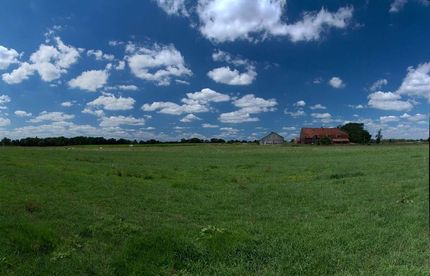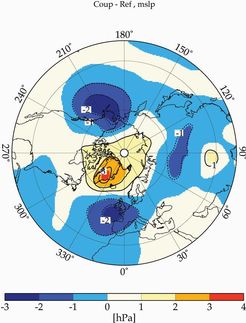First-ever study to link increased mortality specifically to carbon dioxide emissions
A Stanford scientist has spelled out for the first time the direct links between increased levels of carbon dioxide in the atmosphere and increases in human mortality, using a state-of-the-art computer model of the atmosphere that incorporates scores of physical and chemical environmental processes. The new findings, to be published in Geophysical Research Letters, come to light just after the Environmental Protection Agency's recent ruling against states setting specific emission standards for this greenhouse gas based in part on the lack of data showing the link between carbon dioxide emissions and their health effects.
While it has long been known that carbon dioxide emissions contribute to climate change, the new study details how for each increase of one degree Celsius caused by carbon dioxide, the resulting air pollution would lead annually to about a thousand additional deaths and many more cases of respiratory illness and asthma in the United States, according to the paper by Mark Jacobson, a professor of civil and environmental engineering at Stanford. Worldwide, upward of 20,000 air-pollution-related deaths per year per degree Celsius may be due to this greenhouse gas.
"This is a cause and effect relationship, not just a correlation," said Jacobson of his study, which on Dec. 24 was accepted for publication in Geophysical Research Letters. "The study is the first specifically to isolate carbon dioxide's effect from that of other global-warming agents and to find quantitatively that chemical and meteorological changes due to carbon dioxide itself increase mortality due to increased ozone, particles and carcinogens in the air."
Jacobson said that the research has particular implications for California. This study finds that the effects of carbon dioxide's warming are most significant where the pollution is already severe. Given that California is home to six of the 10 U.S. cities with the worst air quality, the state is likely to bear an increasingly disproportionate burden of death if no new restrictions are placed on carbon dioxide emissions.
On Dec. 19, the Environmental Protection Agency denied California and 16 other states a waiver that would have allowed the states to set their own emission standards for carbon dioxide, which are not currently regulated. The EPA denied the waiver partly on the grounds that no special circumstances existed to warrant an exception for the states.
Stephen L. Johnson, the EPA administrator, was widely quoted as saying that California's petition was denied because the state had failed to prove the "extraordinary and compelling conditions" required to qualify for a waiver. While previous published research has focused on the global effect on pollution - but not health - of all the greenhouse gases combined, the EPA noted that, under the Clean Air Act, it has to be shown that there is a reasonable anticipation of a specific pollutant endangering public health in the United States for the agency to regulate that pollutant.
Jacobson's paper offers concrete evidence that California is facing a particularly dire situation if carbon dioxide emissions increase. "With six of the 10 most polluted cities in the nation being in California, that alone creates a special circumstance for the state," he said, explaining that the health-related effects of carbon dioxide emissions are most pronounced in areas that already have significant pollution. As such, increased warming due to carbon dioxide will worsen people's health in those cities at a much faster clip than elsewhere in the nation.
According to Jacobson, more than 30 percent of the 1,000 excess deaths (mean death rate value) due to each degree Celsius increase caused by carbon dioxide occurred in California, which has a population of about 12 percent of the United States. This indicates a much higher effect of carbon dioxide-induced warming on California health than that of the nation as a whole.
Jacobson added that much of the population of the United States already has been directly affected by climate change through the air they have inhaled over the last few decades and that, of course, the health effects would grow worse if temperatures continue to rise.
Jacobson's work stands apart from previous research in that it uses a computer model of the atmosphere that takes into account many feedbacks between climate change and air pollution not considered in previous studies. Developed by Jacobson over the last 18 years, it is considered by many to be the most complex and complete atmospheric model worldwide. It incorporates principles of gas and particle emissions and transport, gas chemistry, particle production and evolution, ocean processes, soil processes, and the atmospheric effects of rain, winds, sunlight, heat and clouds, among other factors.
For this study, Jacobson used the computer model to determine the amounts of ozone and airborne particles that result from temperature increases, caused by increases in carbon dioxide emissions. Ozone causes and worsens respiratory and cardiovascular illnesses, emphysema and asthma, and many published studies have associated increased ozone with higher mortality. "[Ozone] is a very corrosive gas, it erodes rubber and statues," Jacobson said. "It cracks tires. So you can imagine what it does to your lungs in high enough concentrations." Particles are responsible for cardiovascular and respiratory illness and asthma.
Jacobson arrived at his results of the impact of carbon dioxide globally and, at higher resolution, over the United States by modeling the changes that would occur when all current human and natural gas and particle emissions were considered versus considering all such emissions except human-emitted carbon dioxide.
Jacobson simultaneously calculated the effects of increasing temperatures on pollution. He observed two important effects:
- Higher temperatures due to carbon dioxide increased the chemical rate of ozone production in urban areas
- Increased water vapor due to carbon dioxide-induced higher temperatures boosted chemical ozone production even more in urban areas.
Interestingly, neither effect was so important under the low pollution conditions typical of rural regions, though other factors, such as higher organic gas emissions from vegetation, affected ozone in low-pollution areas. Higher emissions of organic gases also increased the quantity of particles in the air, as organic gases can chemically react to form particles.
And in general, where there was an increase in water vapor, particles that were present became more deadly, as they swelled from absorption of water. "That added moisture allows other gases to dissolve in the particles-certain acid gases, like nitric acid, sulfuric acid and hydrochloric acid," Jacobson said. That increases the toxicity of the particles, which are already a harmful component of air pollution.
Jacobson also found that air temperatures rose more rapidly due to carbon dioxide than did ground temperatures, changing the vertical temperature profile, which decreased pollution dispersion, thereby concentrating particles near where they formed.
In the final stage of the study, Jacobson used the computer model to factor in the spatially varying population of the United States with the health effects that have been demonstrated to be associated with the aforementioned pollutants.
"The simulations accounted for the changes in ozone and particles through chemistry, transport, clouds, emissions and other processes that affect pollution," Jacobson said. "Carbon dioxide definitely caused these changes, because that was the only input that was varied."
"Ultimately, you inhale a greater abundance of deleterious chemicals due to carbon dioxide and the climate change associated with it, and the link appears quite solid," he said. "The logical next step is to reduce carbon dioxide: That would reduce its warming effect and improve the health of people in the U.S. and around the world who are currently suffering from air pollution health problems associated with it."



























































